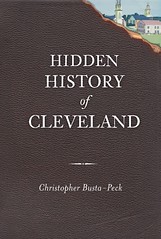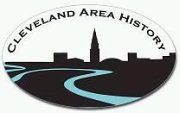Or, Why We Need to Retain Historic Houses as Part of Our Communities
In the past few months, I've raised a louder voice for preservation of buildings relating to historic individuals and events. As a result, I've seen many different suggestions as to things that we should be doing instead of preserving these buildings.
Some have suggested that photographic documentation is enough. Others have have suggested that a given building isn't worth saving because it wasn't where the individual created their most important works. Still others have suggested that the individual's achievements would be better commemorated by a statue. One even suggested, in a letter to the editor of the Plain Dealer, on Wednesday, that we should deconstruct the Langston Hughes house and re-use the lumber to build a community center.
I'm a youth services librarian in the inner city. In my experience, when you talk about overarching historical themes, you get a lot of blank looks. But when you can talk about important individuals who lived in their neighborhoods, who walked the same streets as they walk every day, it's possible to make a real connection.
It's not enough to just show photographs of a house that once existed. There's an importance that actual artifacts have that simply isn't conveyed in photographic reproductions. We aren't content with a museum exhibit of photographs of Satchel Paige's baseball uniform or Langston Hughes' manuscript poetry - we demand the real thing.
Many important individuals have come out of Cleveland - individuals that the children I serve can look up to. We tell them that these historic figures are worthy of respect and admiration, that they are people the children can look up to, but then we demolish what little remains of these great people's physical connection to the city. What message does this send?
As I've said before, I don't believe that these houses should be made into museums. I just think that they should be preserved as part of the community. There are plenty of historic houses that remain private residences - take the John Heisman birthplace or the Jeremiah Gates residence, the oldest house in Cleveland.
It's our collective fault that some of these houses have been allowed to decay to this point. We failed to bring them to the public attention when they needed less work. There are plenty of homes throughout the area that individuals and companies are in the process of rehabilitating, either as their own residences, or with the intent of resale. It costs a lot of money to demolish a house - $10,000 plus - wouldn't a more appropriate expenditure of the public money be to put that expense into the rehabilitation of the structures? $10,000 would often be enough to make the difference between a house that can be rehabbed in a cost effective manner and one that cannot.
Why should the public pay for any part of the rehabbing of a private residence? Because, while not open to the public, these houses are part of our history. The cost of fixing up any one of them to museum standards, with proper accessiblity, mechanical, and fire suppression systems would likely cost a half million dollars. This hypothetical sum might instead be divided over 25 houses, to the tune of $20,000 each. It would stabilize 25 sites important to the history of our community, and would provide the public a greater value than one small museum.
It's not about public vs. private funds, however. It's about a respect for the history of our city. It's about showing our children that we care about their past. It's about showing that the figures we claim matter actually matter to us.
Friday, September 3, 2010
Why a Historical Marker Isn't Enough;
Labels:
Cleveland,
historical markers,
history,
local history,
presevation
Subscribe to:
Post Comments (Atom)




I'm surprised no one's mentioned this approach:
ReplyDeletehttp://blog.cleveland.com/metro/2009/07/supermans_birthplace_restored.html
This comment has been removed by the author.
ReplyDeleteSick and sad. I remember seeing a vacant lot in Niagara Falls, NY when I took a friend of the family to see the falls. But it was a very special vacant lot! There was a sign put up by the state of NY telling me there was a house there where a local judge used to have meetings and invited everyone, including local Indian leaders. Thanks for telling me why that vacant lot was so special--Not. Sometimes I wonder why I'm going back to school for historic preservation; in this country, trying to explain the value of old/historic buildings to most people is like trying to explain aerodynamics to a cow...
ReplyDeleteParma just tore down our first high school (corner of Ridge and Day) so they could more easily sell the land, and put up a damn plaque. Parma now has plaques marking many torn down buildings. Someone truly doesn't get it.
ReplyDelete